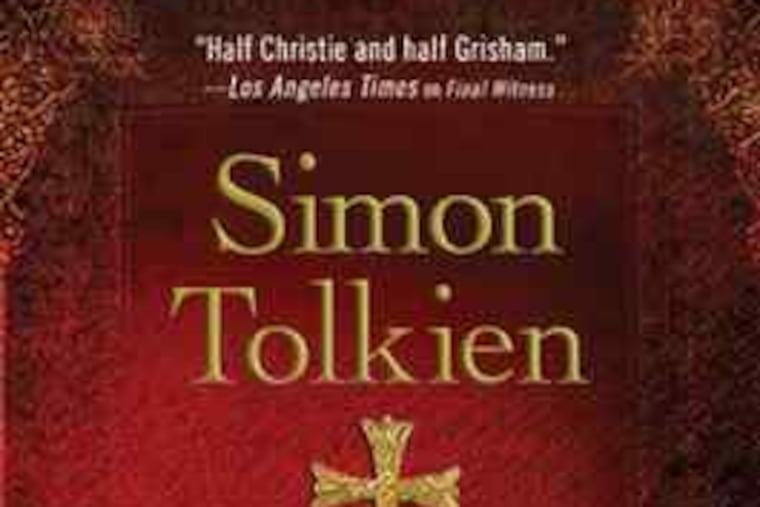A riveting whodunit from Tolkien's grandson
Simon Tolkien's novel The Inheritance takes place mostly during a relatively short period in 1959 - the amount of time it took then in England to try a man for murder and send him to the gallows.

By Simon Tolkien
Minotaur. 325 pp. $24.99
nolead ends nolead begins
Reviewed by Frank Wilson
Simon Tolkien's novel
The Inheritance
takes place mostly during a relatively short period in 1959 - the amount of time it took then in England to try a man for murder and send him to the gallows.
The accused in this case is Stephen Cade, 22, the only natural son of the late Professor John Cade, Oxford historian, who had been found sitting in the study of his manor house with a bullet hole between his eyes.
Stephen was immediately the prime suspect. He and his father had been estranged and the professor had just decided to disinherit both Stephen and his older adoptive brother, Silas. But Stephen's fingerprints were on the murder weapon - he says he reflexively picked it up when he discovered his father's body - and also on the key to the study.
Gaining access to the professor in his home was not easy: His property was well-protected by a state-of-the-art security system, installed after Cade had been shot in the chest while visiting a French village a couple of years earlier.
The reader knows something about Cade's connection to that village that most of the characters in the novel do not, because the opening chapter takes place in that same village in 1945, not long after D-Day. Seems that Col. Cade, as he then was, along with a Sgt. Ritter and a Cpl. Carson, ambushed some Germans, took their weapons, and made their way to a nearby chateau, where they roused the owner, his wife, and their elderly manservant in search of something - a book, as it happens - that the colonel wanted very badly, so badly that he and his comrades ended up killing husband, wife, and servant, and torching the chateau.
Cade, in fact, was not a nice man. He paid no attention to Silas after Stephen was born and no attention to either after his wife was killed in a car accident. The only person who really liked him was the former Sgt. Ritter, whom Cade had hired as his factotum and who moved into Cade's home along with his wife after Cade's wife died. There were, in fact, plenty of people who hated Cade enough to at least contemplate his murder, though to reveal in a review who they might be would be well-nigh criminal.
The Crown's prosecutor - and the presiding judge - are convinced it is an open-and-shut case of parricide. Oxfordshire Inspector William Trave, no longer young and none too well, is the one official with doubts, and not just because Stephen reminds him so much of his own son, killed two years earlier in a motorcycle accident. No, Trave is increasingly convinced that his problem with this case is that, for the first time in his career, he hasn't followed the promptings of his instincts. He may just have enough time to rectify that error.
Simon Tolkien is the grandson of J.R.R. Tolkien and, while there are no elves or dwarves in these pages, there is on display a narrative skill that the author of The Lord of the Rings would surely have recognized and admired. I picked the book up one night and read the first 60 pages in no time flat. Had it not been so late and I so tired, I would have probably continued reading until dawn. As it was, I picked it up again first thing the next morning - and there went that day: no coffee, no breakfast, no lunch. I didn't even get out of bed until I had finished and had to get ready to go out to dinner.
Not long after that, my wife picked it up - and that was pretty much the last I saw of her for a couple of days.
It works so well, not because of cheap tricks like cliff-hanger chapter endings, but because of Tolkien's deft handling of ensemble. It is the differences in character and motive, the continual changes in viewpoint, that drive one to find out what exactly is going on and what actually happened.
Oh, I almost forgot: The book that Cade so desperately wanted to have was a codex that he believed would lead him to the whereabouts of something called the Cross of St. Peter, a crucifix made from the wood of the cross on which Jesus was crucified. This precious object, it seems, can bring out the worst in some people, a little like that ring Grandfather Tolkien wrote about.